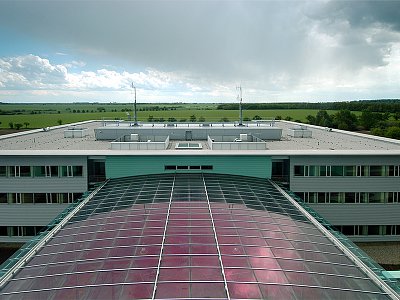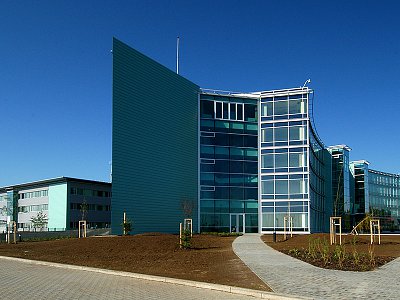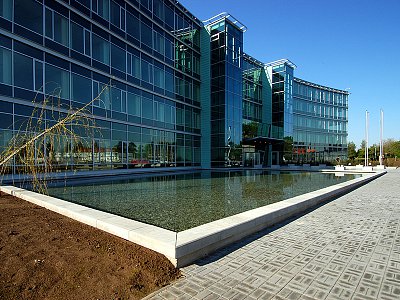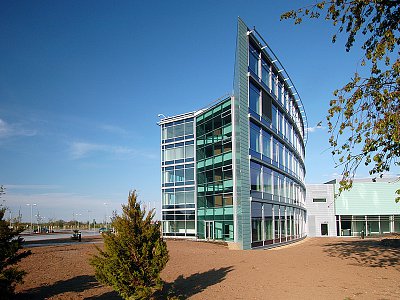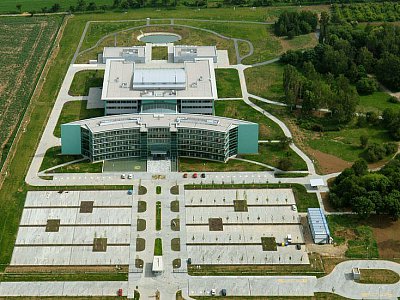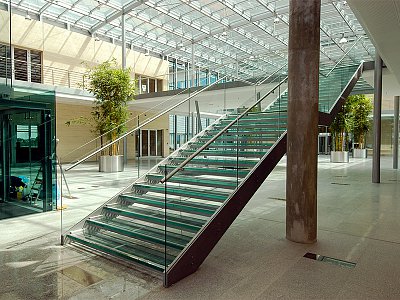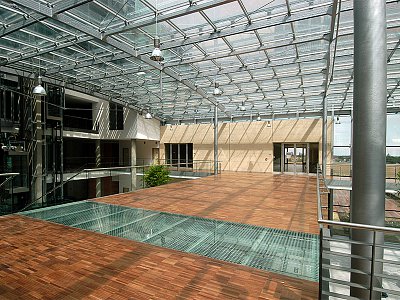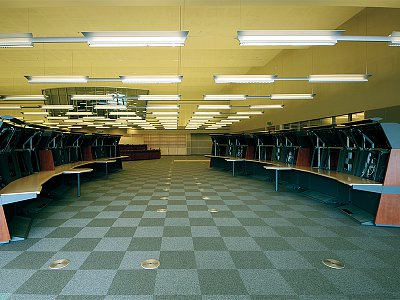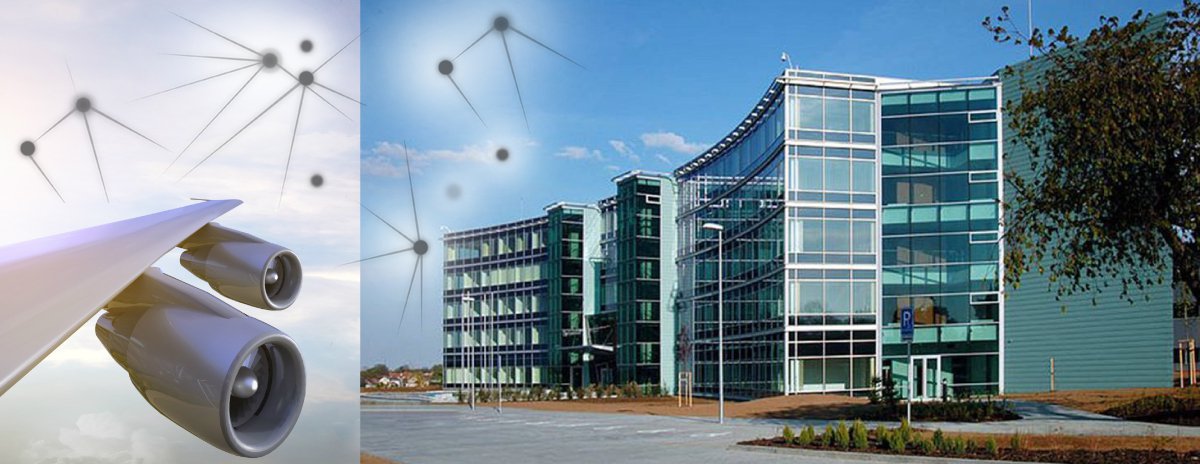
Building
2005
National Integrated Air Traffic Control Centre, Jeneč u Prahy
The world of the parallel airspace must have its control centre seated in a safe and comfortable environment. The air traffic control operates 24/7. The staff is under extreme pressure. There is no room for error. This is one of the reasons why only every fourth candidate completes the training successfully.
| Project details | |
|---|---|
| Location: | Prague, Jeneč |
| Investor: | Air Navigation Services of the Czech Republic, state-owned company |
| Contractor: | HOCHTIEF VSB, Division 8 |
| Project type: | Traffic Infrastructure |
| Construction period: | 07/2003–05/2005 |
| Description: |
The actual centre is designed as a set of buildings situated along the central north-south axis, which serves as the base for individual functions, areas and safety zones. The main front consists of a five-storey rounded administrative building in the shape of bent connected wings, through which the glazed entrance hall which is open towards free space of upper storeys penetrates, while those upper storeys are interconnected by means of galleries in their central part. The arch glazed northern facade is mirrored in a still water area. The entrance part is followed up by a generously dimensioned area of the glazed central hall - the communication and social centre of the building. The passage area forms at the same time an inner garden with short-term relaxation elements even in conditions of unfavourable Czech climate. The passage offers access to two-storey transversal wings adjacent to the southern facade of the administrative building. There are catering, social and rehabilitation premises in this area. The main hall premises are situated in a separate operationally technical block which is designed as a compact volume which follows up to the longitudinal axis of the passage. The ground floor includes the central technological hall (CST) and the operational hall (ATS) situated above it. The ATS hall is the strategic core of the facility, its area is about 950 m² and enables placement of the necessary number of workplaces as well as a partial reserve for their possible growth. About 80-90 employees in the course of one shift can work in the operational hall. The deployment of individual workplaces is arranged in groups according to the nature of activities performed – area activities, approaching activities and other activities, in such a way that individual workplaces can form logical wholes. A glazed gallery situated on the 3rd aboveground level above the entrance into the hall is available for excursions. The servicing and office premises are situated on the circumference of the halls. Most workplaces are therefore oriented towards the surrounding greenery. There is a separately standing energy block situated out of the actual operational building, and this energy block is divided into two parts and in terms of view it is screened by greenery. The entire set of buildings is founded on piles, due to the loess bedding. The bearing structures are mostly of reinforced concrete, of a monolithic type. The monolithic skeleton with spans of 7.2 m is used for the administrative building as well as at the operational building. There are frequently used doubled installation floors with regard to the large quantity of installations. The exposed parts of the centre have steel bearing structures which are a distinctive architectonic element in both the exterior and interior. Steel is used especially in the passage where the visible structure creates, together with the glass areas, an impression of lightness, transparency and interconnection with the exterior. The drawn elements and reinforcing elements are designed of DETA rectifiable bars. In a similar way, steel is used also at the suspended arch facade of the glazed southern part of the administrative building. The steel structure is used also for the roofing of the ATS hall, where steel arch-type lattice girders are used for the span of 29.5 m. The area between the trusses is used as an inspection and installation floor level. The overlapping of the roof with firm sun breakers is supported by four steel columns which form the so-called “colossal order”. The building of the centre is equipped with a number of technologies enabling an uninterrupted operation also in the case of a power supply failure. The building is powered with electrical energy supplied from two independent sources. Besides, strategic systems are provided with backup facilities consisting of diesel generator sets and UPS systems. The risk of fire occurrence is eliminated in the entire building by means of a fixed fire fighting system, including gas extinguishing equipment in the halls. In terms of safety, the facility is divided into three zones with a differentiated card access system monitored from the central control room. The operation of the entire centre is controlled and monitored just from this room (BMS). The facility is included into the system of the existing transmission centre which is surrounded by high-quality vegetation with elements of a landscape park. New landscaping, water areas and small architecture elements interconnect the two parts of the facility and thus they form the relaxation background of the centre. Main indicators:
|
